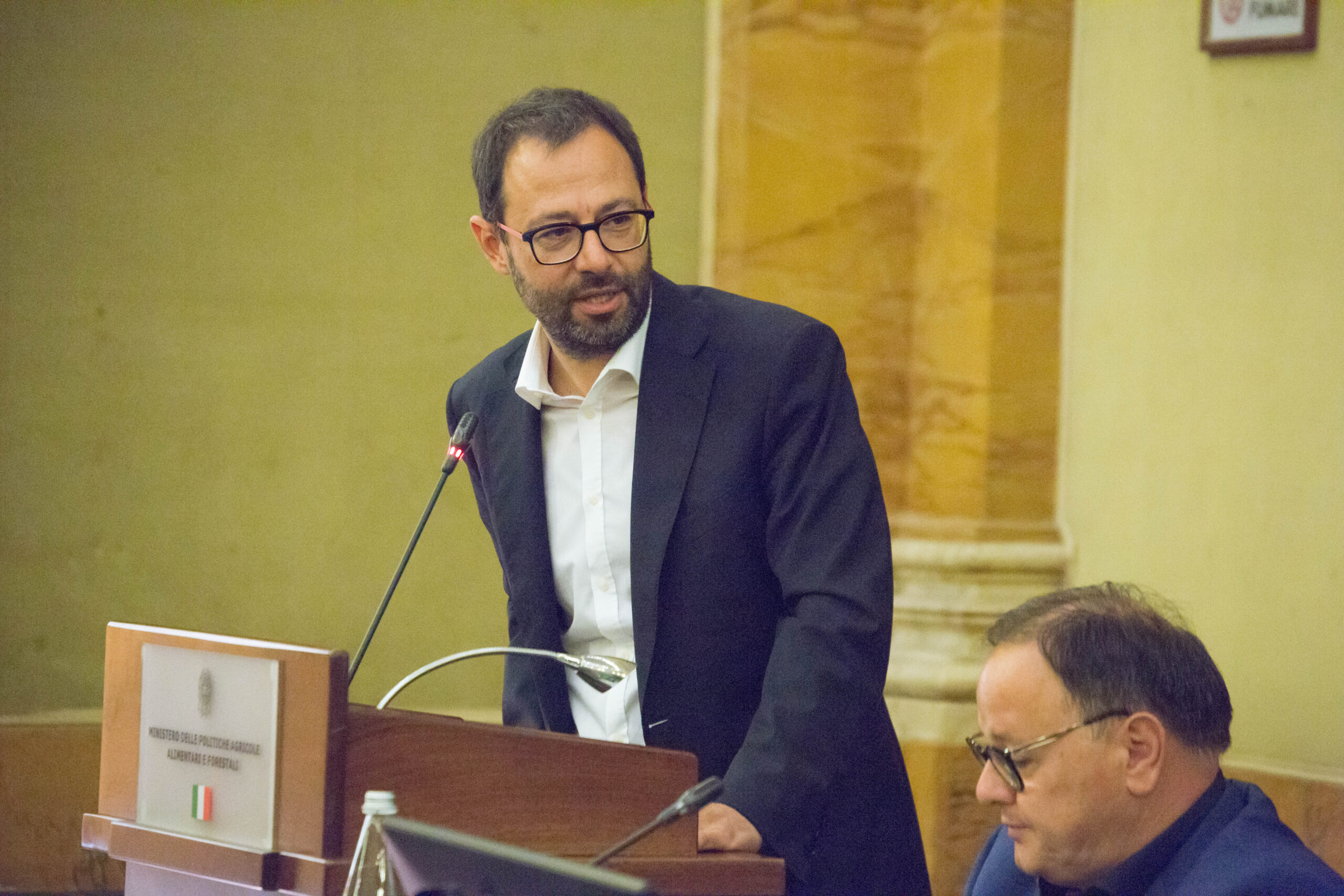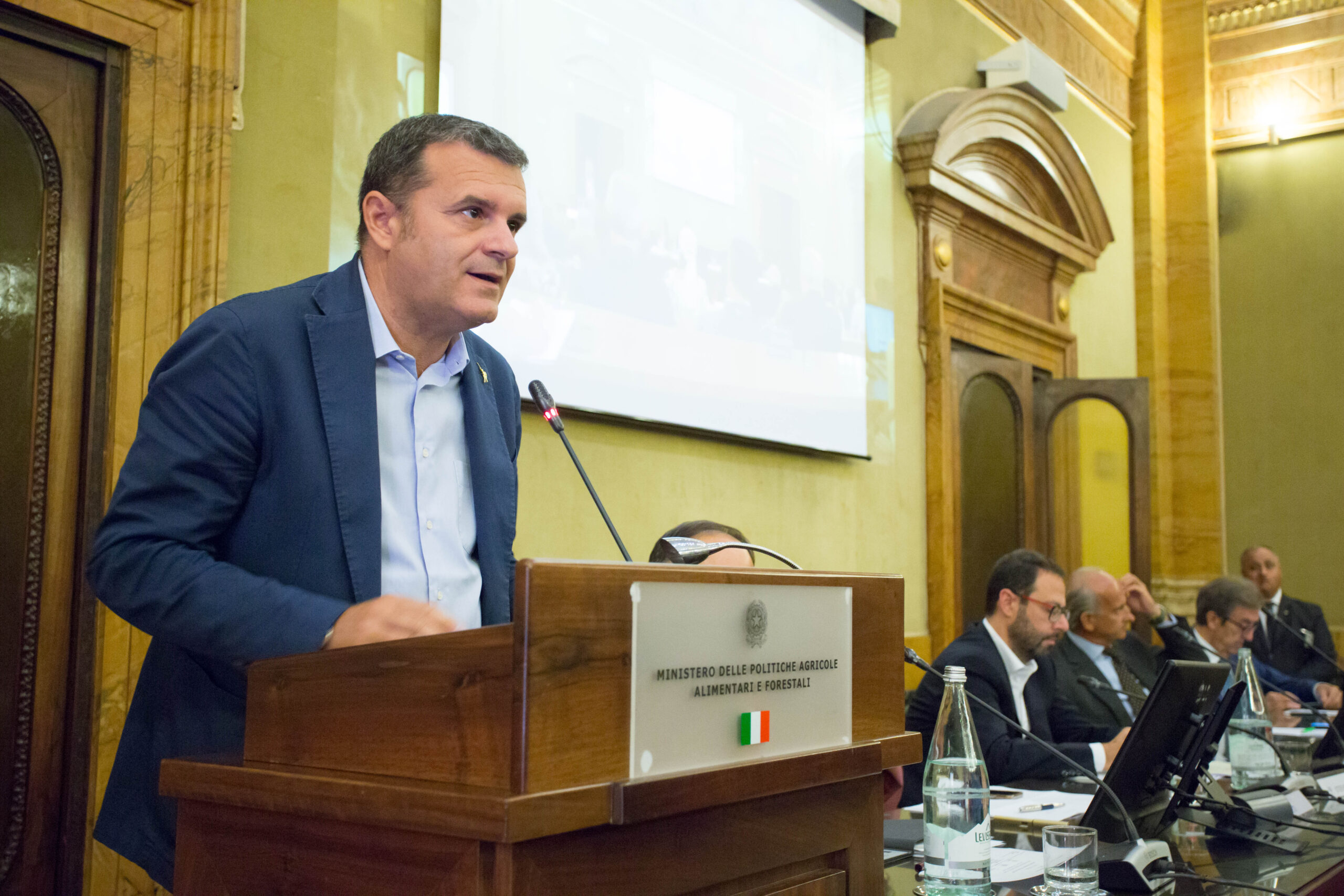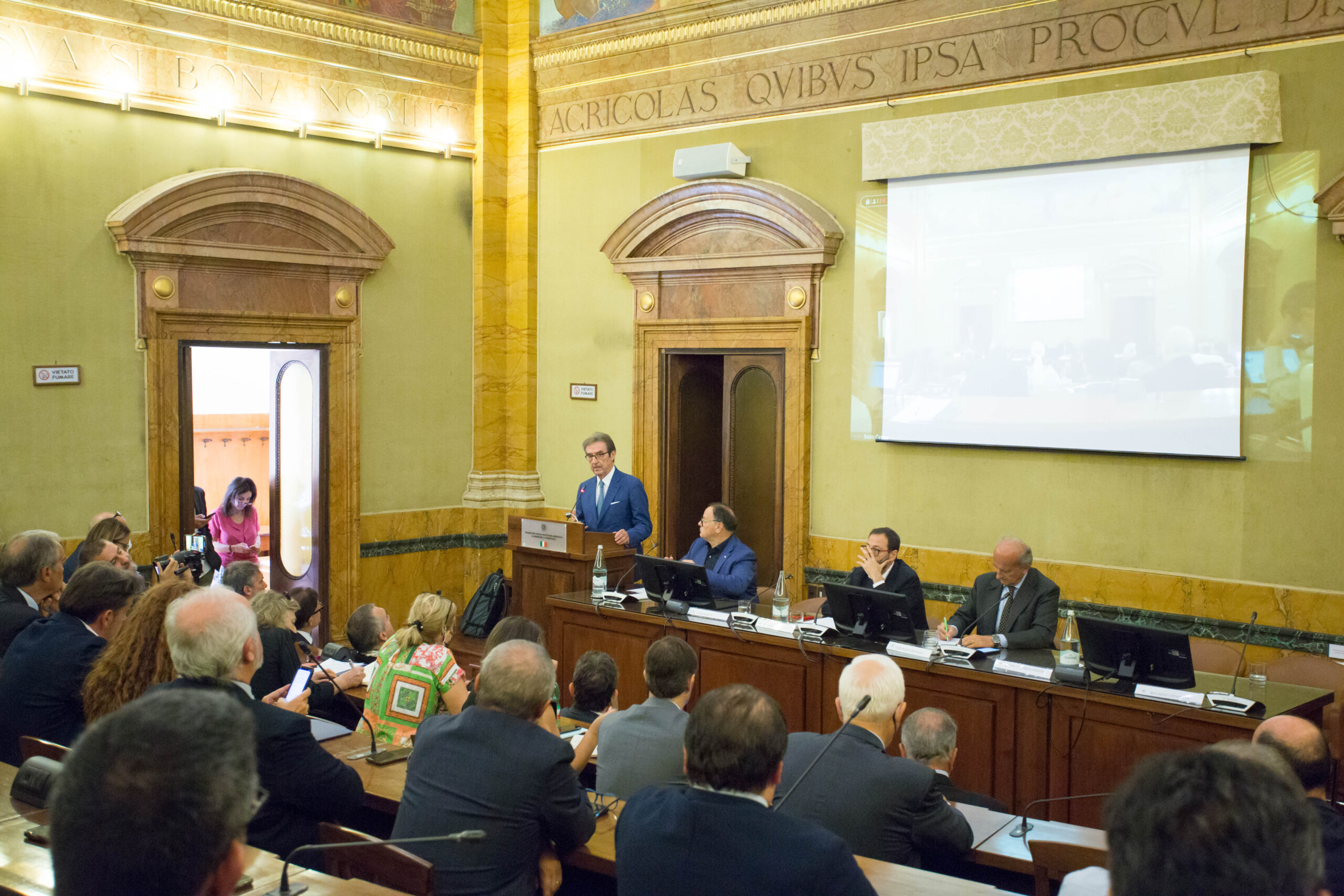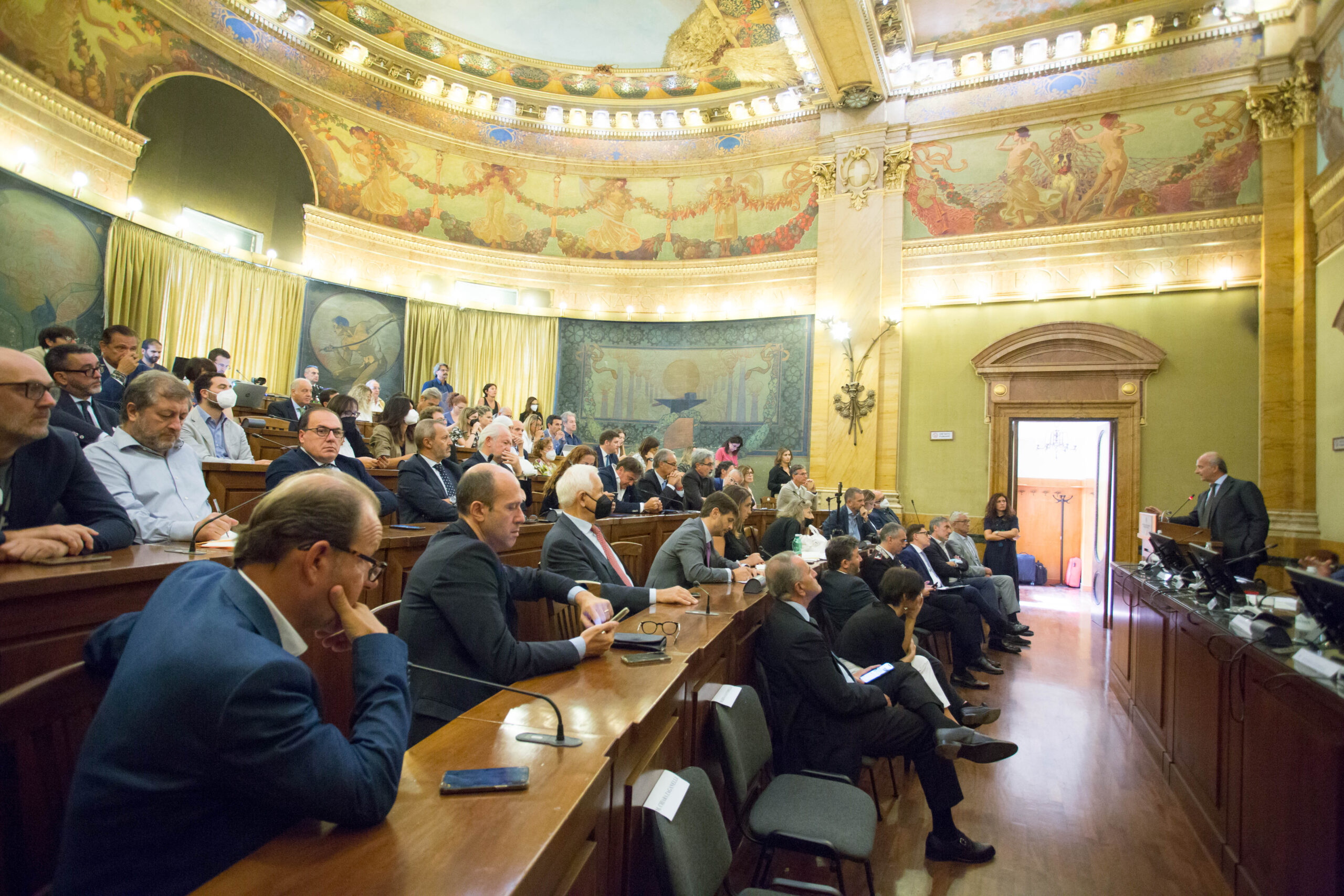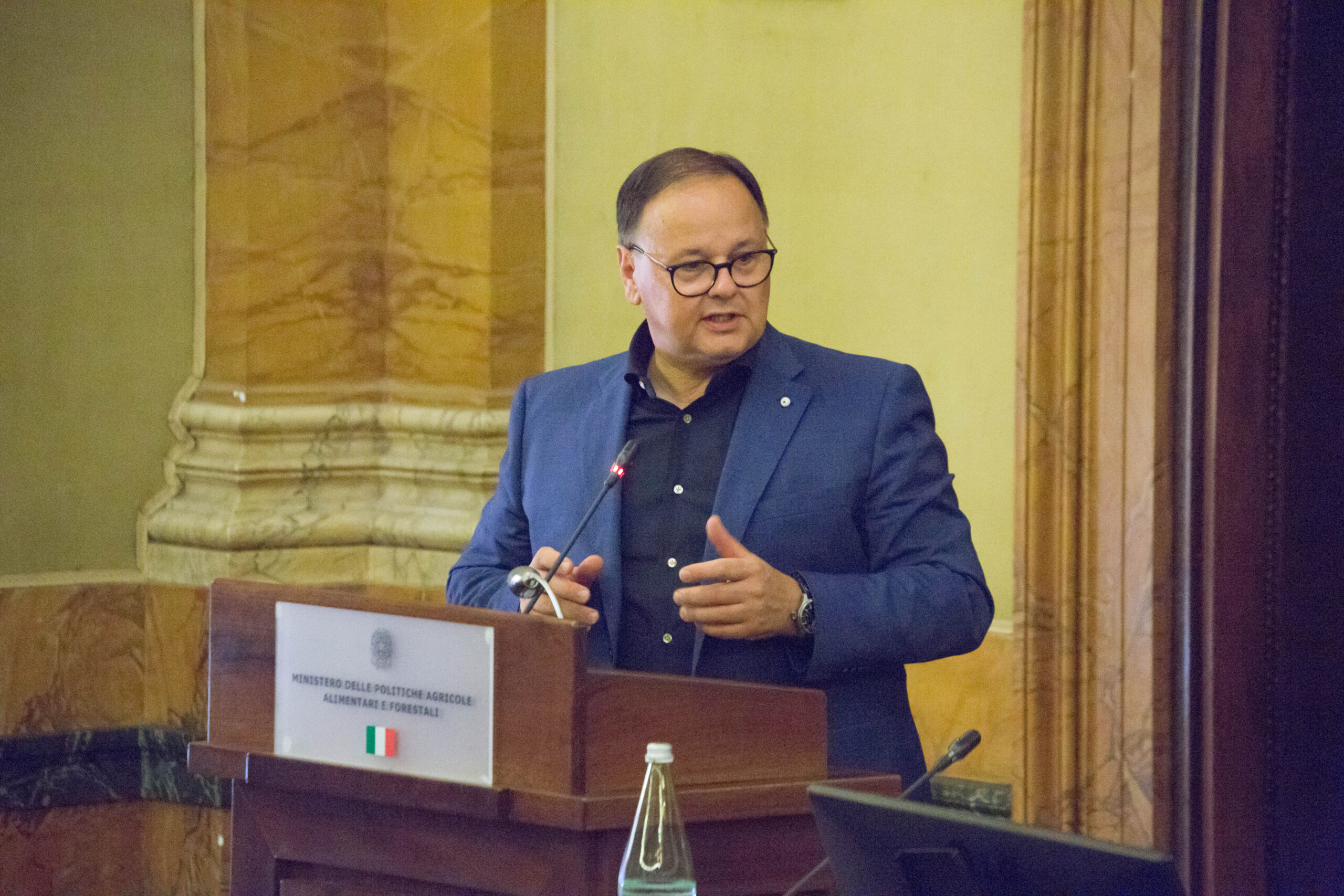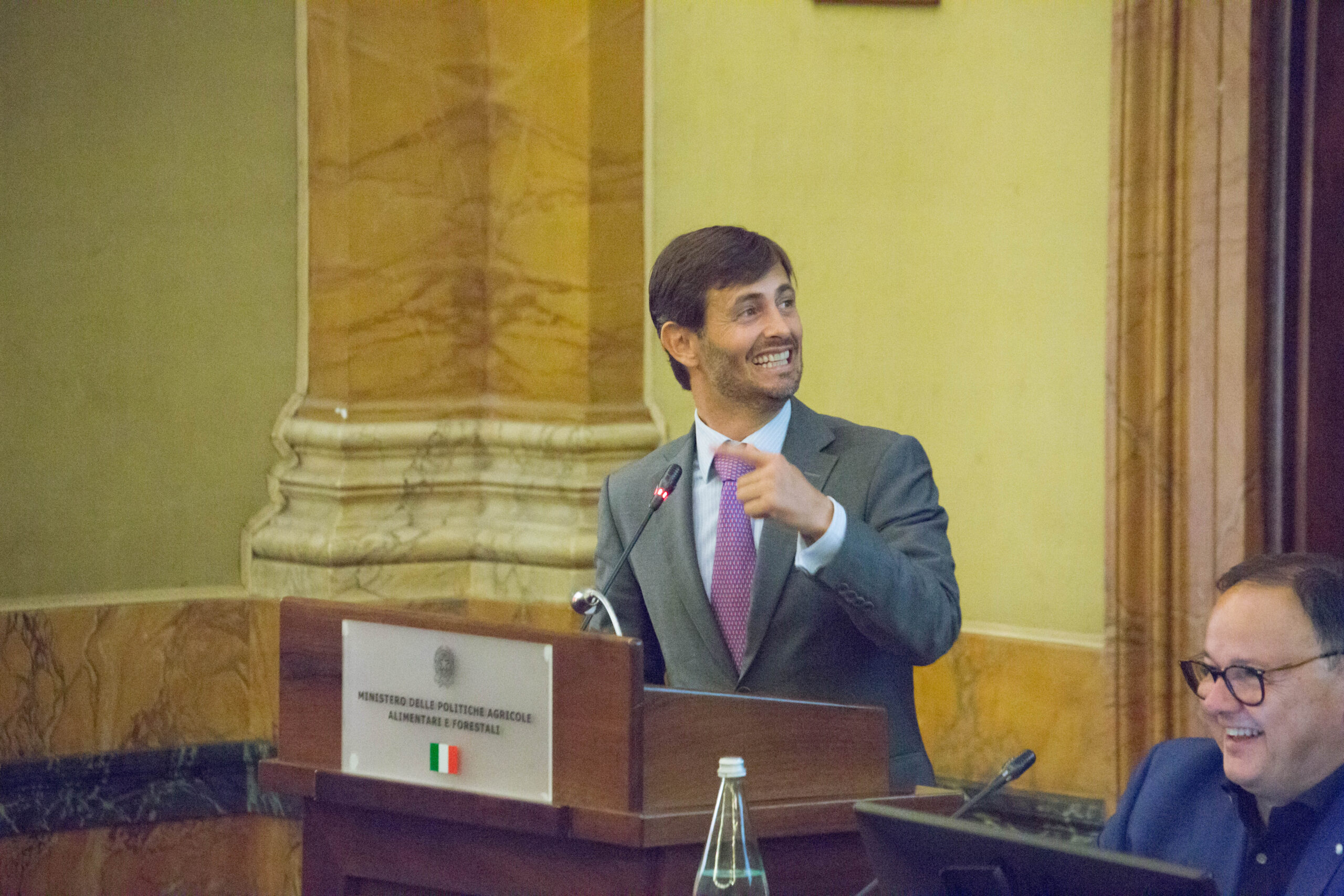A satisfactory vintage in quantity and surprising in quality. According to the grape harvest forecasts of the Assoenologi Observatory, Ismea and the Italian Wine Union, presented at Mipaaf, this year’s drought and record heat have not compromised the Italian vineyards, which, at the start of the harvest campaign, promise grapes of good to excellent quality, with quantity in line with the average of recent vintages.
Italy’s 2022 Grape Harvest
Ensuring the resilience of the final product, in addition to the providential August rains, is the extraordinary research and application work of producers on a vine that is increasingly resilient to climatic and meteorological adversity.
According to the data presented to, among others, the minister and the undersecretary for Agricultural Policies, Stefano Patuanelli and Gian Marco Centinaio, 2022 production should in fact be around 50.27 million hectoliters of wine, the same amount as last year (50.23 million hectoliters of wine the Agea 2021 figure) and at +3% compared to the average of the five-year period 2017-2021, although the weather trend in the coming weeks remains crucial. Favorable weather conditions for grape ripening could in fact turn the forecast into a positive sign, while unsuitable weather for late varieties would negatively affect the harvest product.
A Positive Scenario
According to Fabio Del Bravo, head of Ismea’s Rural Development Services Directorate: “In terms of markets, Italy closed the 21/22 campaign with price increases, especially in wines at the top of the quality pyramid. The first lines of the new campaign outline a still uncertain scenario where the many unknowns weigh heavily, also linked to tensions on costs and logistics, which last year had already created concerns for operators but which are now even more pressing.”
“The good estimated production results, in spite of summer fears about drought, mean that there will be the availability of quality product this year as well, and while on the foreign front demand seems to be holding up albeit not with the brilliant results of 2021, on the domestic front there are some signs of subsiding purchases from modern distribution even if we have to consider the recovery of wines bought for consumption outside of the home.”
A Quality Harvest
“The current harvest is handing us a grape quality that ranges from good to excellent,” said Riccardo Cotarella, president of Assoenologi. “Much depends on the reference areas, never as in this season has the quantitative-qualitative judgment been totally like a patchwork, and this is essentially due to an extreme climate that heavily conditioned, in particular, the months of May, June and especially July with peaks of heat that exceeded 40 degrees and such a prolonged drought.”
Fortunately, in August,” Cotarella explains, “over much of the country except for a few exceptions-‘smart’ rains arrived, meaning that they did not cause any damage, so that the vines were able to resume their vegetative growth and ripen grapes without any particular stress.”
“Still, mitigating the negative effects of climate change has also been the result of a scientific approach that we winemakers have put in place to support the vineyards,” notes the president. “Today, more than ever, science and research in viticulture and in the winery are essential; room for apprentice wine wizards is gone, if there ever was any in the past. Between now and the end of September, we trust in sunny weather, warm enough and perhaps accompanied by a light breeze, so that the grapes yet to be harvested can reach perfect ripeness so as to go on to produce wines capable of asserting themselves once again on the national and international wine scenes.”
Performance & Profitability
For the president of Unione Italiana Vini, Lamberto Frescobaldi: “The vineyard once again proved to be the pivot of the supply chain, demonstrating that even with heat and drought it is possible to make high-quality wines and satisfactory volumes. Accolades then go to the companies and producers, who once again helped the plants cope in the best possible way with the adversity of the weather.”
“But,” Frescobaldi underscores, “the job does not end with the harvest, because especially in such a delicate economic phase there is a growing awareness that we can and must do better on the value front for our wine.
In fact, the much-vaunted production record is not a sufficient condition to generate wealth: the “value yields” of the Italian vineyard – according to an analysis carried out by the Uiv Observatory – perform significantly lower than those of France, which marks three times the profitability per hectare cultivated (16.6 thousand euros vs 6 thousand) and per hectoliter produced (294 vs 82 euros).”
“We still need to go a long way to ensure profitability that is directly proportional to the quality produced, with a path that starts from a more rational governance of the sector in terms of appellations of origin to common wine. We must aspire to write – or rewrite – a true vocational charter for our territories, anchored in real indicators, with few but clear rules for all those involved, from producers to control bodies and ending with the trade and consumers.”
Climatic and Vegetation Trends
With -46 percent cumulative precipitation from the beginning of the year to the end of July compared to the average of the last 30 years, 2022 stood out as the driest year since 1800, aggravated also by the hottest temperatures in the last five decades. An exceptional climatic conjuncture, mitigated by the August rains, which did not damage the Italian vineyard where, while keeping a high threshold of attention to the weather in the coming weeks, a more than good vintage is expected with grapes characterized by medium to high potential alcohol contents.
Particular attention is paid to the polyphenolic contents of red grapes that determine potential expectations of excellence for aging wines. From a phytosanitary point of view, the situation of the Italian vineyard appears generally excellent, with very rare pathogen attacks.
Vineyard Geography in Italy and Variability Across Europe
The ranking of Italian regions also remains stable, led by Veneto, which, with 11.5 million hectoliters, alone produces more than 1/5 of Italian wine. It is followed by Puglia and Emilia-Romagna, with 10.6 and 7.4 million hectoliters, respectively, for a total product of the three regions equal to 59% of the entire Italian vineyard.
On the trends front, the peculiarity of the season does not allow for homogeneous forecasts even in the same area. In the Northwest, there is an important drop in Lombardy (-20%), followed by a more moderate one in Piedmont (-9%) and Liguria (-5%) while Valle d’Aosta is estimated to be growing (+10%).
In the Northeast reported recovering from last year are both Trentino Alto Adige (+10%) and Emilia Romagna (+4%) while minor losses could be in Veneto (-3%), with Friuli Venezia Giulia essentially stable.
Less variable is the situation in the Center, where there is a sharp rise in volumes for Umbria (+10%) and Tuscany (+12%), followed by a more moderate increase in Marche and Lazio (both at +5%).
In the South, the slight increase in Puglia (+3%) contrasts with the slight decline in Sicily (-5%); stable production is expected for Abruzzo, Molise and Calabria. Also growing are Campania (+4%), Sardinia (+15%) and Basilicata (10%).
As far as quality is concerned, excellent wines are generally expected in Trentino Alto Adige and Sicily, while they are setting the bar on “excellent “Piedmont, Val d’Aosta, Friuli Venezia-Giulia, Tuscany, Lazio, Umbria, Abruzzo, Molise, Puglia and Sardinia, with Liguria, Emilia-Romagna, Marche, Campania, Basilicata and Calabria more cautious on “good/optimal” forecasts. “Good,” on the other hand, are the expectations for the labels from Lombardy and Veneto.
According to production estimates noted today by Ignacio Sánchez Recarte, secretary general of the association of European Entrepreneurs Ceev, there is equally high variability in production across the Old Continent due to climate. Overall, the European vineyard has held up, with France growing on the five-year average (+3.5%, to 44 mln hl), while Spain will see an expected 16% contraction. Production levels in Germany and Portugal are stable.
Italian Wine Exports for the First Semester
Italian Exports for the First Semester With the 2022 vintage, Italy’s wine sector maintains its production leadership while that of revenue remains with the French. On the market front, according to the latest elaborations based on Istat, Italy closed the first half of the year with a record 3.8 billion euros in value (+13.5 percent over the same period 2021) while the trend in exported volumes is flat: +0.4 percent. Bottled still and sparkling wines posted +10.3% in value but gave up 1.2% in volume.
Unstoppable performance of the sparkling wine sector, which in the first part of the year is close to 1 billion euros in value (+25.5%), with volumes at +10.6%. Growing sharply – mainly due to inflation – is the average price, which rises 13.1% and even nearly 18% in the United States, whose market is also held up by the strong dollar. In the world’s top buyer, in fact, tricolor growth in value is 13.3 percent, with volumes down 3.8 percent.
Wine and Grape Must Production in Italy (thousands of hectoliters)
Average 2017-2021 2021 2022* Var.% 2022*/2021
Piedmont 2,708 2,770 2,510 -9%.
Aosta Valley 15 15 16 10%
Lombardy 1,386 1,318 1,050 -20%
Trentino-Alto A. 1.356 1.237 1.360 10%
Veneto 11,502 11,750 11,456 -3%
Friuli-V.Giulia 1,868 2,019 2,019 0%
Liguria 41 41 39 -5%
Emilia-Romagna 7,627 7,117 7,380 4%
Tuscany 2,169 2,050 2,290 12%
Umbria 374 346 380 10%
Marche 836 853 895 5%
Latium 788 854 895 5%
Abruzzo 3,260 3,348 3,348 0%
Molise 223 243 243 0%
Campania 680 673 700 4%
Apulia 9,193 10,368 10,630 3%
Basilicata 81 87 95 10%
Calabria 110 117 117 0%
Sicily 4,192 4,577 4,331 -5%
Sardinia 415 449 515 15%
Italy 48,825 50,232 50,270 0%

